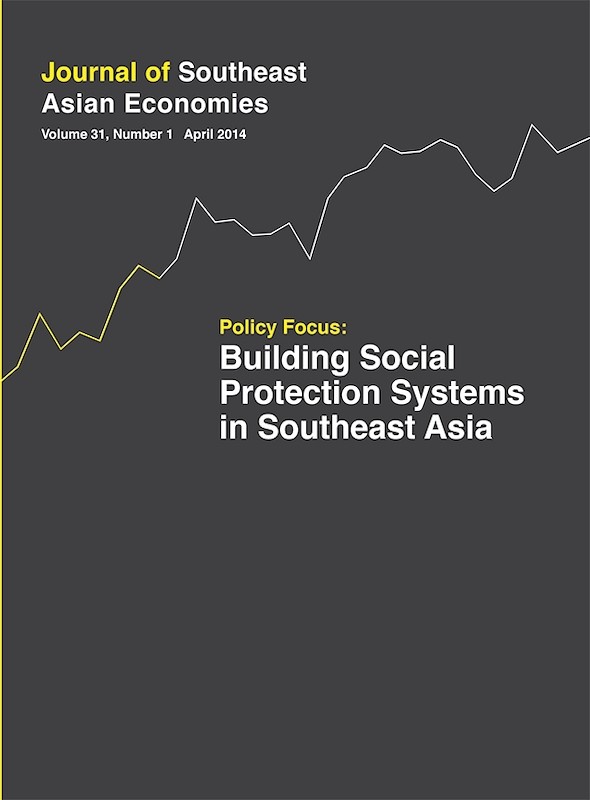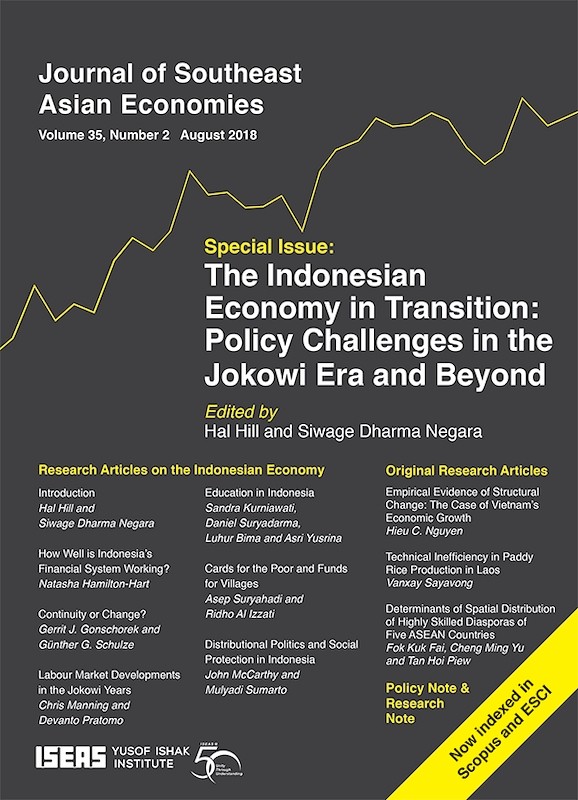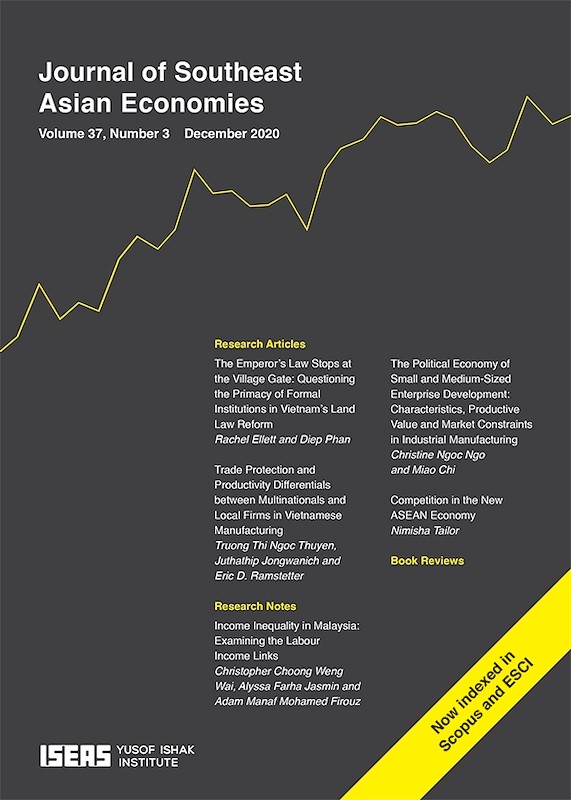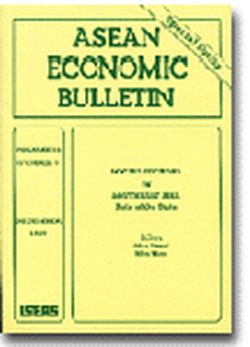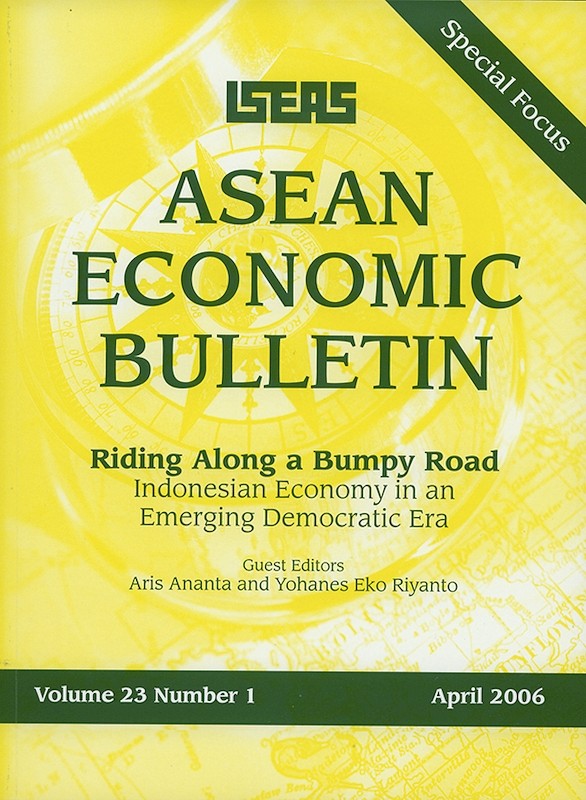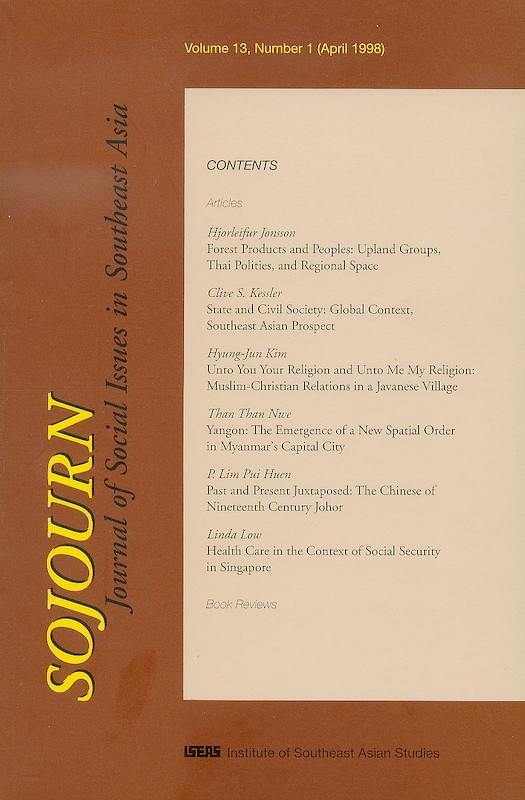ASEAN Economic Bulletin Vol. 29/3 (Dec 2012). Special focus on "Sustainable and Just Social Protection in Southeast Asia"
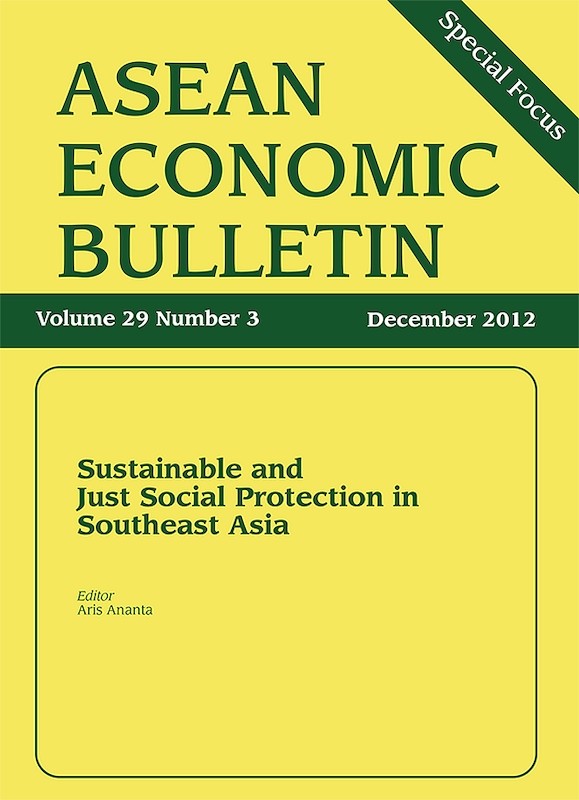
Aris Ananta, editor
Date of publication:
December 2012
Publisher:
Institute of Southeast Asian Studies
Number of pages:
99
Code:
AE29/3
Contents
-
ASEAN Economic Bulletin Vol. 29/3 (Dec 2012). Special focus on "Sustainable and Just Social Protection in Southeast Asia"
[Whole Publication] -
Preliminary pages
- ARTICLES
-
Sustainable and Just Social Protection in Southeast Asia, by Aris Ananta, author see abstractPoverty remains a continuing crisis in Southeast Asia, regardless of the timing and severity of the global economic crisis. Moreover, being poor and falling into poverty is often beyond an individuals capacity to avoid. Who should help these individuals and how much help should be given - the individuals themselves, their families, their friends, their communities, and/or their governments? A just and financially sustainable social protection system is perhaps an answer to those questions. This paper provides an analytical background for the five articles in this special issue of ASEAN Economic Bulletin, dealing with issues on social protection in Indonesia, Malaysia, Singapore, Thailand, and Vietnam. It discusses what social protection is, reviews an analytical framework of a continuum pioneered by Esping-Anderson (1990), and attempts to locate where the five Southeast Asian countries are in the continuum.
-
Indonesia: In Search of a Placement-Support Social Protection, by Muliadi Widjaja, author see abstractThis paper discusses the current social security and social assistance condition in Indonesia. Due to the complexity of introducing rules and regulations, social assistance has played a wider role than social security in Indonesia. Currently, there are six social assistance programmes, with Rice for the Poor (Raskin) being the longest running programme. In the case of social security, the National Health Insurance Programme (Jamkesmas) was introduced in 2008, and it is still being improved. With the introduction of Law No. 24 year 2011 regarding Executive Assembly for Social Protection (Badan Penyelenggara Jaminan Sosial, or BPJS), Indonesia is embarking on a comprehensive social protection programme which covers both health protection and pension, starting from 2014. Finally, the social protection expenditures are compared with other expenditures in the central governments budget. In order to give more support to the social protection programme, the politics of government expenditures should shift from the utilitarian theory of justice to the Rawlsian theory of justice.
-
Malaysia: Towards a Social Protection System in an Advanced Equitable Society, by Ragayah Haji Mat Zin, author see abstractThis paper argues why Malaysia needs to strengthen and provide more formal social protection. It describes the social protection programmes currently available in Malaysia - public assistance; and social security and insurance schemes including employers liability scheme, Workmens Compensation Scheme, civil service pension, Employees Provident Fund (EPF), Armed Forces Provident Fund, and Social Security Organisation (SOCSO) insurance schemes. The paper also attempts to identify the challenges faced by these programmes, especially in terms of coverage, governance and sustainability. Policy recommendations include finding ways to protect the informal sector, relooking at the EPF Annuity Schemes proposals and promoting them again to EPF members, improving transparency and accountability of civil service schemes by subjecting them to regular evaluations and making it publicly available. The introduction of a minimum wage, the discussion of introducing unemployment insurance and raising the retirement age to sixty years in the private sector this year augur well for the Malaysian workers.
-
Employment-based Social Protection in Singapore: Issues and Prospects, by Chew Soon Beng , author see abstractThe social protection system in Singapore can be defined in terms of having the ability and opportunity to work for a family wage for at least thirty years in order to own a house, provide adequate healthcare protection for the family, pay for childrens education as well as provide a stream of income during the post-employment period. Singapores protection system is superior in many ways but there are deficiencies. For instance, any discontinuity in employment or breakup of the family will threaten this social protection system. Furthermore, some low-income workers have to continue to work even in their seventies. The paper makes some recommendations for the improvement of the social protection system in Singapore.
-
Poverty and Just Social Protection in Thailand, by Yongyuth Chalamwong, Jidapa Meepien, authors see abstractThis paper analyses social protection in Thailand, including the development of social protection schemes and their institutions. It shows that although the Government of Thailand has attempted to improve social protection schemes, the impacts of these schemes on poverty reduction and justice creation are still debated. This paper shows that the schemes may not be able to lift people out of poverty since the average expenditure per person in social protection that the government subsidizes is less than the poverty line. It also reveals that justice has not been created, as it has not covered the migrants and those working in informal sectors. To solve this problem, the paper recommends the government to increase the budget and cooperate with local authorities and non-government organizations to raise accessibility of social services for all people.
-
Delivering Social Protection to the Poor and Vulnerable Groups in Vietnam: Challenges and the Role of the Government, by Giang Thanh Long, author see abstractThis paper reviews the current social protection system in Vietnam with a special focus on access of the poor and vulnerable people. It shows that the system has been expanded to cover more poor and vulnerable people. However, at the same time, delivery of services and financing are still unequal between groups, in which advantaged groups have better utilization of services than disadvantaged groups. To reach a social protection floor, especially a universal health insurance coverage by 2015, the paper argues that the Government of Vietnam will face a number of challenges, in which financing is the most critical. Also, to expand retirements and social assistance effectively, focusing on the poor and vulnerable groups will ensure a sustainable poverty reduction.
- BOOK REVIEWS
-
BOOK REVIEW: The Migration of Indian Human Capital: The Ebb and Flow of Indian Professionals in Southeast Asia, by Faizal bin Yahya and Arunajeet Kaur, by Kate Golebiowska, author
-
BOOK REVIEW: Challenges to the Global Trading System: Adjustment to Globalization in the Asia-Pacific Region, edited by Peter A. Petri and Sumner J. La Croix, by Jayarethanam Pillai, author
-
BOOK REVIEW: The Politics and the Economics of Integration in Asia and the Pacific, edited by Shiro Armstrong, by Pushpa Thambipillai, author

